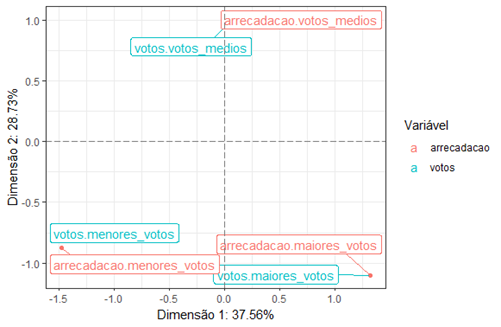Are the films with the highest grossing the best rated?
Keywords:
Data collection, Data science, Data analysis, Correspondence analysis, Applied statisticsAbstract
The worldwide passion and importance of the industry, whether for the financial market or population, it is evident the need to study this market and try to find insights. In this way, this study is focused on drawing some conclusions around this billionaire industry called cinema. The study intends to verify if the films with the highest collection are those with the best grades, since they are the ones that attract the most public. The objective is to understand the relationship of the variables of the dataset worked, it contains the 100 greatest films that obtained a higher score in population evaluation on the IMDb website, the films are between the years 1932 and 2015, this data was taken from the Kaggle website and were made publicly available. Using the method called correspondence analysis or ANACOR, together with the R-Studio software to perform the necessary calculations. The method consists of verifying the relationship between the variables, in the study the film's collection, number of votes and the average score of the film within the site will be used. Using the percentiles so that numerical variables become categorical, since ANACOR is a study for this type of variable. In this way, it was possible to verify through applied statistics that we have evidence to believe that the greater the collection, the greater the number of votes and the greater the film's score when compared to the number of voters.

Downloads
Published
How to Cite
Issue
Section
License
Proposta de Política para Periódicos de Acesso Livre
Autores que publicam nesta revista concordam com os seguintes termos:
- Autores mantém os direitos autorais e concedem à revista o direito de primeira publicação, com o trabalho simultaneamente licenciado sob a Licença Creative Commons Attribution que permite o compartilhamento do trabalho com reconhecimento da autoria e publicação inicial nesta revista.
- Autores têm autorização para assumir contratos adicionais separadamente, para distribuição não-exclusiva da versão do trabalho publicada nesta revista (ex.: publicar em repositório institucional ou como capítulo de livro), com reconhecimento de autoria e publicação inicial nesta revista.
- Autores têm permissão e são estimulados a publicar e distribuir seu trabalho online (ex.: em repositórios institucionais ou na sua página pessoal) a qualquer ponto antes ou durante o processo editorial, já que isso pode gerar alterações produtivas, bem como aumentar o impacto e a citação do trabalho publicado (Veja O Efeito do Acesso Livre).
